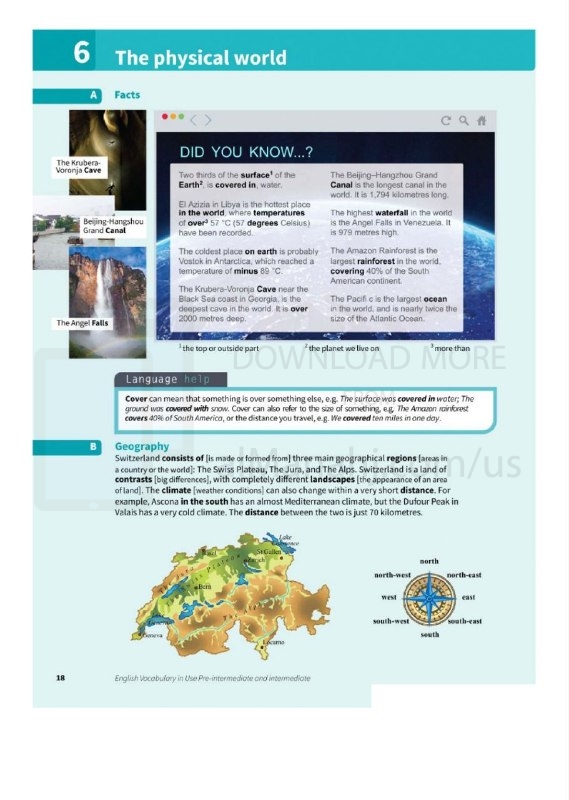| You are here: Almanahj Website ⇒ American curriculum ⇒ 7th Grade ⇒ Physics ⇒ Term 1 | ||
|---|---|---|
Worksheet about physical world | ||
|---|---|---|
| Subject: Physics | ||
| 7th Grade | ||
| Term 1 | ||
| Year: 2023/2024 | ||
| Size: 454.4KB | ||
| Number of clicks: 70 | ||
| Publish date:November 06, 2023 | ||
| Added by: Eman | ||
| Last download date: 2024-09-01 07:56:24 | ||
| Updated by: Eman9966 on 2023-11-06 08:33:38 | By: theodor ppedina | |
| File info: Answer the following questions based on your understanding of the physical world and its fundamental principles. Write your answers in the space provided. 1. Define the term "matter" and provide examples of different states of matter. Answer: Matter refers to anything that occupies space and has mass. It can exist in three states: solid, liquid, and gas. Examples of solid matter include wood, iron, and ice. Liquid matter includes water, oil, and milk. Gas matter comprises substances like oxygen, nitrogen, and helium. 2. Explain the concept of energy and provide examples of different forms of energy. Answer: Energy is the capacity to do work or cause changes in matter. It exists in various forms. Examples of different forms of energy include: - Kinetic energy: The energy possessed by an object in motion, such as a moving car or a falling object. - Potential energy: The stored energy an object possesses due to its position or condition, like a stretched spring or a raised weight. - Thermal energy: The energy associated with the temperature of an object, such as the heat from a fire or the warmth of the sun. - Electrical energy: The energy associated with the flow of electric charges, like the electricity powering electronic devices. - Chemical energy: The energy stored in the bonds between atoms and molecules, such as the energy released during a chemical reaction. - Nuclear energy: The energy released during nuclear reactions, as in the Sun's fusion process or nuclear power plants. 3. Define the term "force" and provide examples of different types of forces. Answer: Force is a push or pull that can cause objects to accelerate or change their state of motion. Different types of forces include: - Gravitational force: The force of attraction between objects with mass, such as the force that keeps objects on the Earth's surface. - Frictional force: The force that opposes the motion of objects in contact with each other, such as the force that slows down a sliding object. - Electrostatic force: The force exerted between electrically charged particles, like the force between opposite charges or the repulsion between like charges. - Magnetic force: The force exerted by magnets or magnetic fields, such as the force that attracts or repels magnetic objects. - Tension force: The force transmitted through a string, rope, or cable when it is pulled at both ends. - Applied force: The force exerted on an object by a person or an external agent, like pushing a box or pulling a door. 4. Describe the concept of motion and the different types of motion. Answer: Motion refers to the change in position of an object with respect to a reference point. Different types of motion include: - Translational motion: The movement of an object from one place to another in a straight line. - Rotational motion: The movement of an object around an axis or a fixed point, like the spin of a top or the rotation of Earth. - Vibrational motion: The back-and-forth or oscillatory motion of an object around a stable equilibrium position, such as the movement of a pendulum or a guitar string. 5. Explain the laws of motion proposed by Sir Isaac Newton. Answer: -Newton's First Law of Motion (Law of Inertia): An object at rest tends to stay at rest, and an object in motion tends to stay in motion with a constant velocity unless acted upon by an external force. - Newton's Second Law of Motion: The acceleration of an object is directly proportional to the net force applied to it and inversely proportional to its mass. It can be expressed as F = ma, where F is the net force, m is the mass, and a is the acceleration. Newton's Third Law of Motion (Law of Action and Reaction): For every action, there is an equal and opposite reaction. When one object exerts a force on another object, the second object exerts an equal and opposite force on the first object. | ||
| Downloading link Worksheet about physical world |
|---|
|
1699258906.pdf
The file is being prepared for download
|
| File images |
|---|
 |